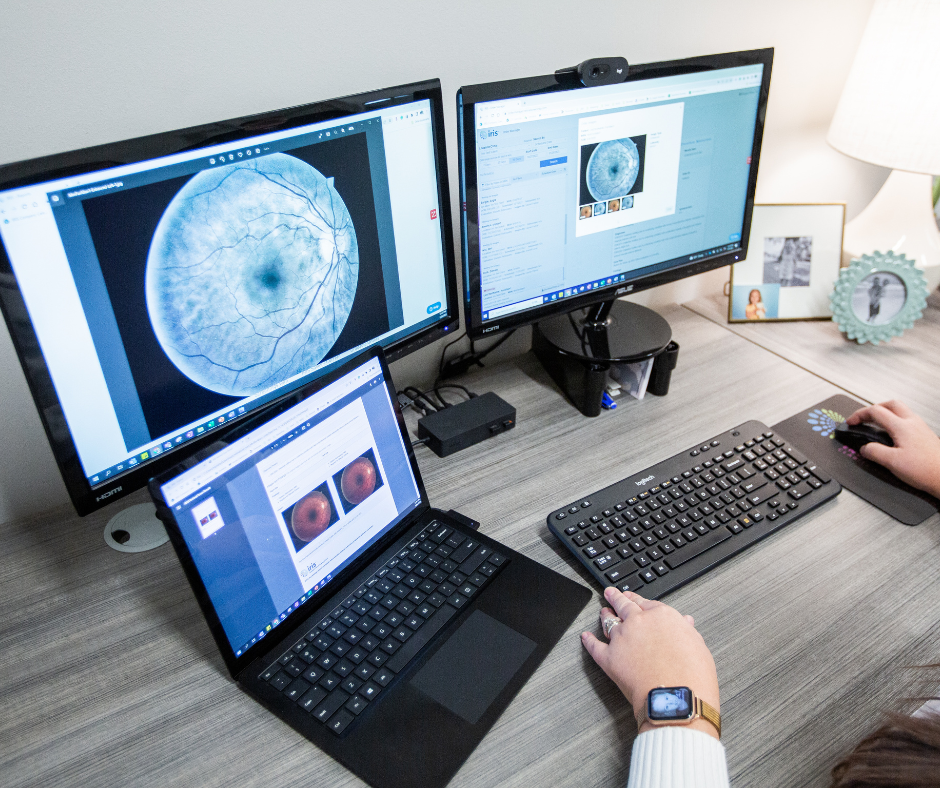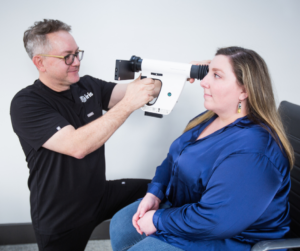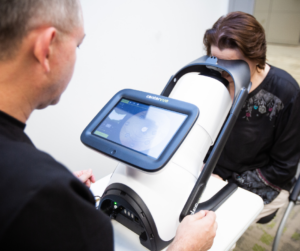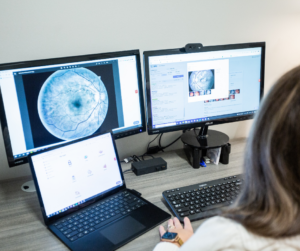4 Ways IRIS Assists Providers in Closing Care Gaps

These days, millions of Americans avoid receiving healthcare treatment due to a growing list of factors, including increasing costs, social and physical barriers, limited resources, and even provider shortages. To fix this, healthcare providers are continually trying to overcome these traditional barriers to treatment by closing care gaps so that more patients receive the treatments that are recommended for them. This ensures that patients receive high-quality outcomes at a reduced cost, due to the detection of preventable diseases earlier in their development.
The treatment of diabetes is a prime example of this. It involves a multi-pronged approach that requires patients to receive blood tests for hemoglobin A1c (Hb A1c) levels, dilated retinal eye exams for diabetic retinopathy, kidney functioning screenings, and annual comprehensive foot screenings. However, some patients with diabetes do not have convenient access to these tests, which can lead to further complications down the road as symptoms progress.
Thus, solutions aiming to close care gaps in diabetes treatment are needed more than ever. That’s where the IRIS Solution comes into play.
Through the integration of cutting-edge technologies and forward-thinking strategies, IRIS is helping in closing care gaps and reshaping the future of patient care. Let’s dive into the top four transformative ways IRIS is making this happen.
1. Reaching More Patients
The first way IRIS helps in closing care gaps is by giving more patient populations access to care. 38% of Americans said in 2022 that they or a family member skipped or delayed medical care due to their fear of cost ramifications when receiving treatment.
Along with these obstacles, there are traditional barriers to medical care that exist for many portions of the population. These traditional barriers include having too little time, not being able to meet clinic hours, or the inability to transport themselves to clinics to receive treatment. These barriers impact over 3.5 million patients in the United States and prevent them from getting the necessary medical attention they need year after year.
With the IRIS Solution, traditional barriers to healthcare can be circumvented. Normally, if a patient needs a diabetic retinopathy exam, they must go to their healthcare provider and then be referred to an ophthalmologist. This adds an extra appointment to their schedule, takes up time, and compounds the need for transportation to appointments.
IRIS’s teleretinal screening solution cuts out these extra steps and reduces the resistance to receiving additional sight-saving screenings by integrating with the systems of in-home care providers. Since the IRIS Solution is camera agnostic, it integrates with both tabletop and handheld fundus cameras. Due to the ease of portability, millions of Americans who are at risk of diabetic retinopathy could be screened in their own homes, closing the common care gaps that prevent people with diabetes from receiving the treatment they need.

2. Streamlining Results
Another barrier to treatment that many patients face is not getting their results from a teleretinal screening in a timely manner. Luckily, IRIS is closing care gaps by quickly delivering trustworthy results to patients.
When patients receive a screening from an in-home healthcare provider, their fundus images are uploaded to the IRIS platform, enhanced, and are made available to the IRIS Reading Center (IRC). Here, remote physicians from across the country review the original and enhanced retinal images to diagnose sight-threatening diseases like diabetic retinopathy within two days.
Once the physicians at the IRC have made their diagnosis, results are automatically sent back to the healthcare provider’s EHR or internal platform, making it easier to refer patients to the right specialist for further treatment.
3. Improving HEDIS and Star Ratings
IRIS is also closing care gaps by improving the HEDIS and Star Ratings for healthcare providers. When care providers decide to treat chronic diseases to solve population health issues, it closes patient care gaps. This improves providers’ HEDIS and Star Ratings, two determinants of patient care efficacy. Once these ratings improve, healthcare providers receive more reimbursement and funding to reinvest in their practice.
As healthcare providers continue to improve their in-home healthcare treatment, they can contribute more to closing care gaps. This continuous improvement of in-home healthcare services can be supplemented with the IRIS Solution.

Providing preventative teleretinal screenings alongside in-home or in-office treatment is an efficient way to improve HEDIS and Star Ratings by detecting diabetic retinopathy early in at-risk patients. This detection provides better outcomes for patients, breaking down the barriers of unattainable healthcare treatment.
4. Partnering With AI Solutions
Furthermore, IRIS is closing care gaps by investing in healthcare technology and Artificial Intelligence (AI) solutions.
Currently, IRIS partners with Thirona and AEYE Health in pursuit of the goal of closing care gaps and providing optionality in diabetic retinopathy interpretation services. This means that healthcare providers now have the option to choose physician-interpreted results, AI-interpreted results, or both, depending on what works best for their practice.
While the AI-interpreted results aren’t as thorough as physician-interpreted results just yet, they do provide immediate results and more reimbursement options for healthcare providers.
Closing Care Gaps With the IRIS Solution
As the challenges in healthcare evolve, so must the solutions. IRIS stands at the forefront of this innovation, tirelessly working towards closing care gaps and ensuring that patients, regardless of their barriers, receive the crucial medical attention they need.

Through its comprehensive teleretinal screenings, partnerships with pioneering AI technologies, and a commitment to improving HEDIS and Star Ratings, IRIS has positioned itself as an innovative solution fighting to end preventable blindness, one retinal screening at a time. To learn more, contact us, or schedule a demo to see the IRIS Solution in action.
Frequently Asked Questions
What Does It Mean to Close a Care Gap?
Closing care gaps means addressing and resolving unmet healthcare needs, and ensuring patients receive timely, appropriate screenings and treatments, which enhances overall patient outcomes.
How Can We Close the Gaps in Patient Care?
We can close gaps in patient care by meeting patients at home and overcoming traditional barriers to medical treatment. This includes providing preventative screenings that detect chronic conditions before they become untreatable.
Why Is It Important to Close Gaps in Care?
Closing care gaps ensures consistent, high-quality patient outcomes while reducing healthcare costs and enhancing patient satisfaction. This is due to detecting, diagnosing, and treating chronic conditions early.
What Is an Example of Gaps in Care?
An example of a gap in care could be a person with diabetes not receiving a screening for diabetic retinopathy. This patient may not have access to care unfortunately because of various barriers to treatment and social determinants of health that prevent them from being screened.
SM# 150, Rev A
Get started with IRIS today.
Want to know if IRIS is right for you? Schedule a one-on-one consultation with our team. We’re here to help.